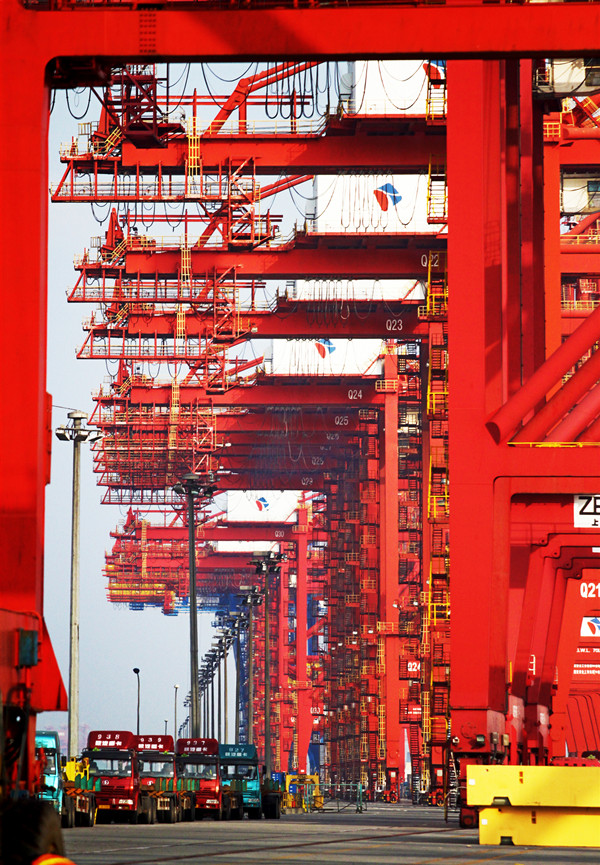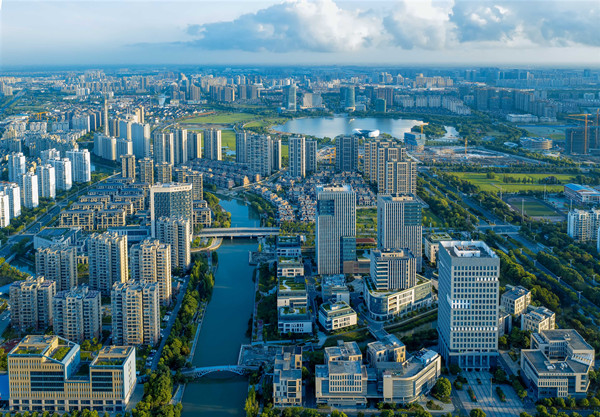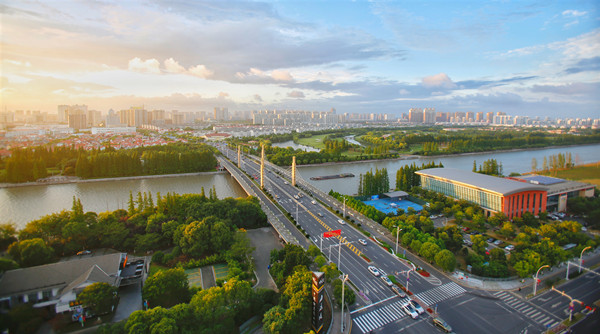Port zone, a base for Yangtze Delta manufacturing
China Taicang Port Development Zone, the largest foreign trade port area in Suzhou, Jiangsu province, has become a key production base for manufacturers from China and abroad.
Located at the southern bank of the Yangtze River estuary, the zone covers an area of 261.8 square kilometers and now hosts 26 Fortune 500 companies, including big names like Procter & Gamble and BP Global.
Some 25 State-owned enterprises and 15 US companies have also invested in the area in past few years.
"We decided to establish our logistics and manufacturing base in Taicang because the city is very unique," said Tan Li, general manager of P&G's branch in Jiangsu.
The Taicang facility, the company's 10th factory in China, began operations in 2012.
"The short travel distance between Shanghai and Taicang allows us to transport equipment and materials conveniently," Tan said.
He said well-established manufacturing bases in surrounding cities make it convenient and cost effective to get raw materials and other production necessities.
"Being adjacent to Shanghai, the location will make it easier to attract talented people to work for us," said Tan, adding that the favorable policies and service reassure P&G that Taicang is the right choice for them.
In addition to geographic advantages and support from the local government, the developmental maturity of the port is another key factor that attracts global giants to set up bases in Taicang.
Official statistics show that the port of Taicang occupies some 38.8 kilometers of waterfront on the Yangtze River and features well-developed deep-draft berths. The waterfront area has stable shoreline conditions and deepwater access in the area.
By the end of 2012, Taicang Port had built 28 berths for 10,000-deadweight-tonnage vessels, including 10 container berths.
Its cargo capacity has reached 97 million tons, with container throughput amounting to 4.35 million twenty-foot equivalent units.
In the near future, the port will have 172 productive berths, including 82 berths capable of accommodating 10,000-tonnage vessels. Its planned cargo throughput will reach 282 million tons, and container throughput is expected to be 21million TEUs annually.
Founded in 1992, the zone was upgraded to a national high-tech zone in 2011.
Last year, the gross regional product of the zone reached 21.6 billion yuan($3.3 billion), with the industrial output value amounting to 73.6 billion yuan. Some key economic indicators have maintained an annual growth rate of some 20 percent for many consecutive years, according to an official report.
With a history of more than 15 years, the zone has become one of the key high-tech parks for petrol and chemical industries in China. It is also the most important economic zone in the Yangtze River Delta.
In addition to attracting traditional manufacturing giants, the port welcomes companies from emerging industries to promote economic restructuring in the area.
To date, many companies, including GCL Solar and Altusvia Energy Co, have set up projects in the zone.
tangzhihao@chinadaily.com.cn
(China Daily 04/22/2013 page11)









